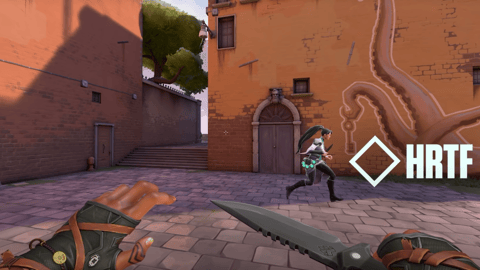
Patch 2.06 is the latest one in Valorant and along with many of the changes, it also added the Head Related Transfer Function aka HRTF. What is it and should you turn it on?
If you still haven't checked the full patch notes ofValorant 2.06, we advise you to do so. In addition to the Viper buffs, we see the official introduction of HRTF.
READ MORE:
What Is HRTF?
The short answer is Head Related Transfer Function. While it might seem like a term you'd find in a sci-fi movie it's much simpler than that:
A head-related transfer function, also sometimes known as the anatomical transfer function, is a response that characterizes how an ear receives a sound from a point in space.
In gaming terms, HRTF enabled turns your headphones into a 3D audio space, which usually gives you a better idea of where a sound is coming from.
HRTF Audio release | #VALORANT ~ HRTF allows players wearing headphones to play audio in a simulated surround sound audio space.~ Currently, only footsteps, reloads, and Deathmatch respawns are rendered using HRTF TL;DR : Better positional audio.
— Valorant Leaks (@ValorLeaks) March 29, 2021
Simply put, you might be able to better pinpoint the exact location of an enemy with HRTF enabled. This isn't the first time HRTF was mentioned in Valorant. In fact, it was accidentally released in October 2020.
It was supposedly scrapped in a later patch but many players reported that things now "sound different".

Should You Enable HRTF?
Ultimately it comes down to two things:
- Whether you're using headphones or not
- Personal preference
Here's a direct comparison between HRTF on and HRTF off.
Note that Valorant HRTF currently only works for footsteps, reloads, and Deathmatch respawns. HRTF is a feature in many other FPS titles and it's actually surprising that Valorant took so long to implement it. What are your thoughts on it? Will you be using HRTF? Tell us on Facebook or Twitter!
- READ MORE: Valorant Patch 2.06 Patch Notes
For the latest Valorant news stay with EarlyGame.


































